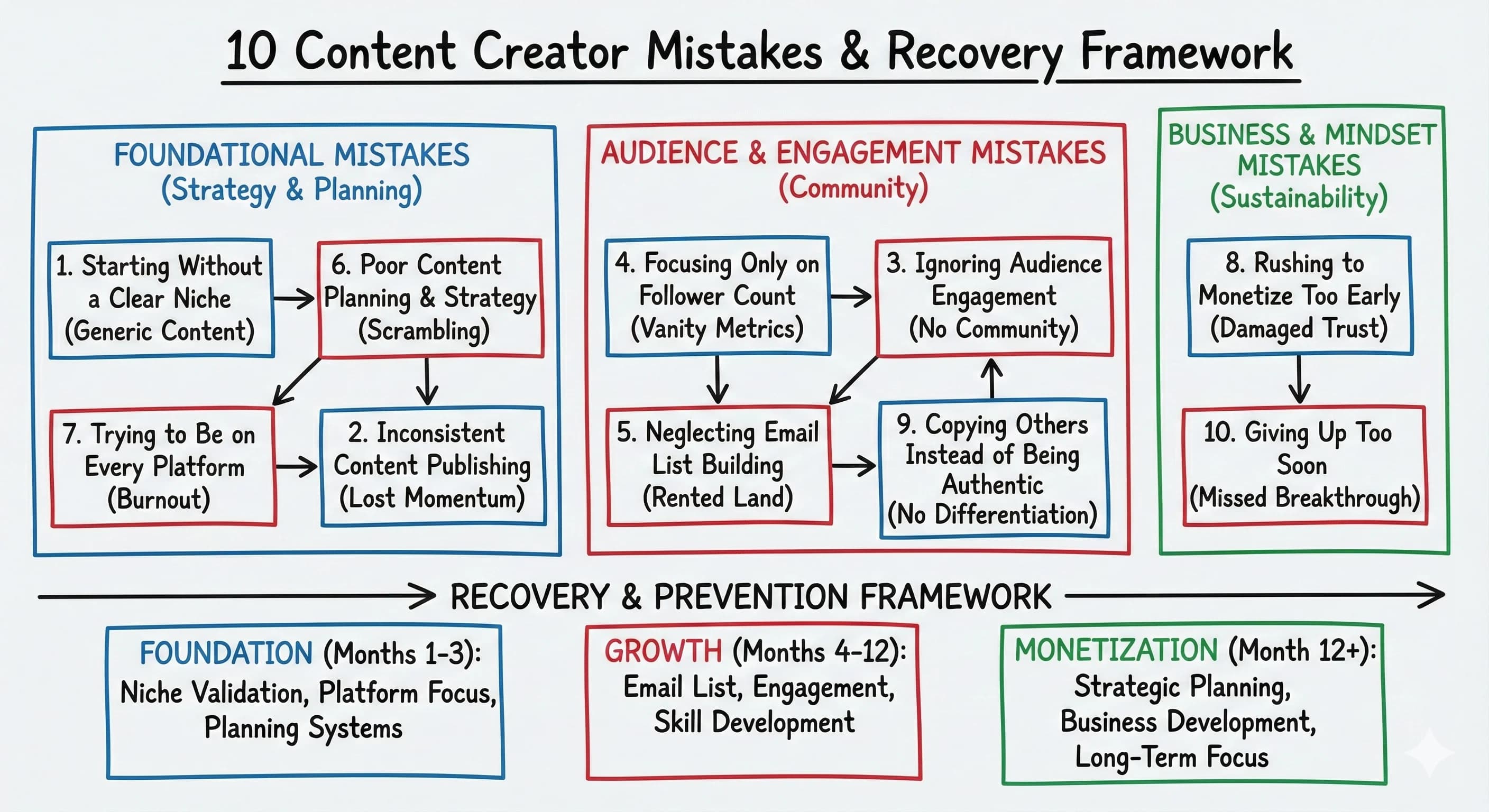10 Content Creator Mistakes That Kill Growth (And How to Fix Them)
Avoid the 10 most damaging content creator mistakes that kill growth and destroy businesses. Learn recovery strategies for niche confusion, inconsistency, poor engagement, and more. Prevention tips included.
•23 min read


